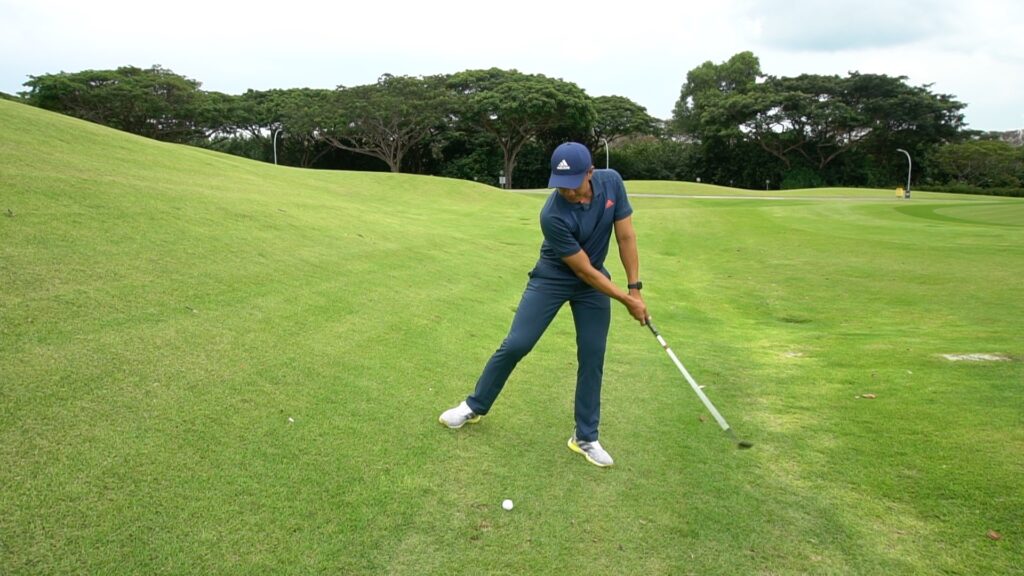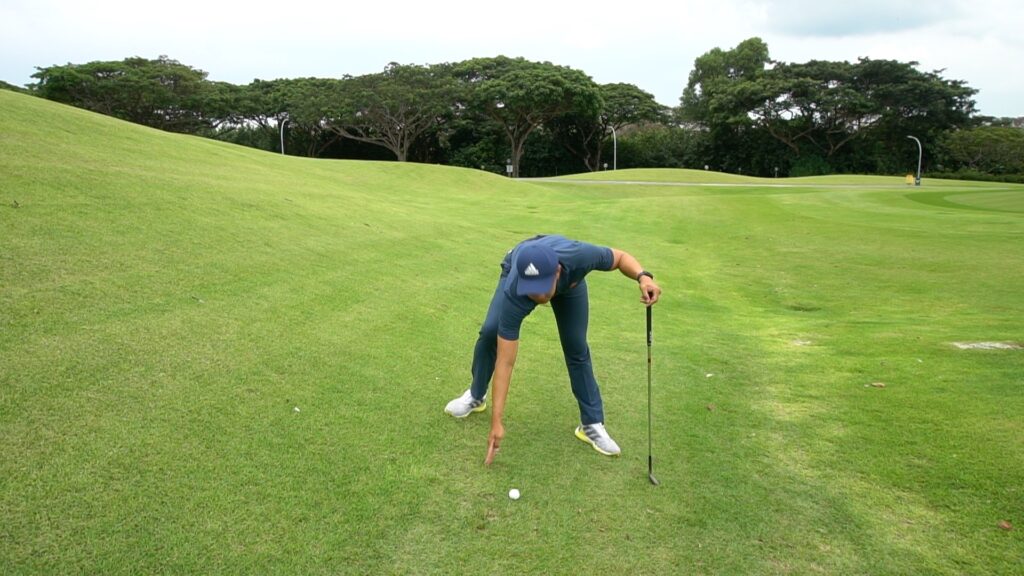Follow these tips and you won’t need to be afraid of these tricky shots anymore.
Unlike the predictability of the range, we’re often faced with uneven lies on the golf course. Uphill and downhill lies are part and parcel of the game, and knowing how to negotiate them is key to playing well.
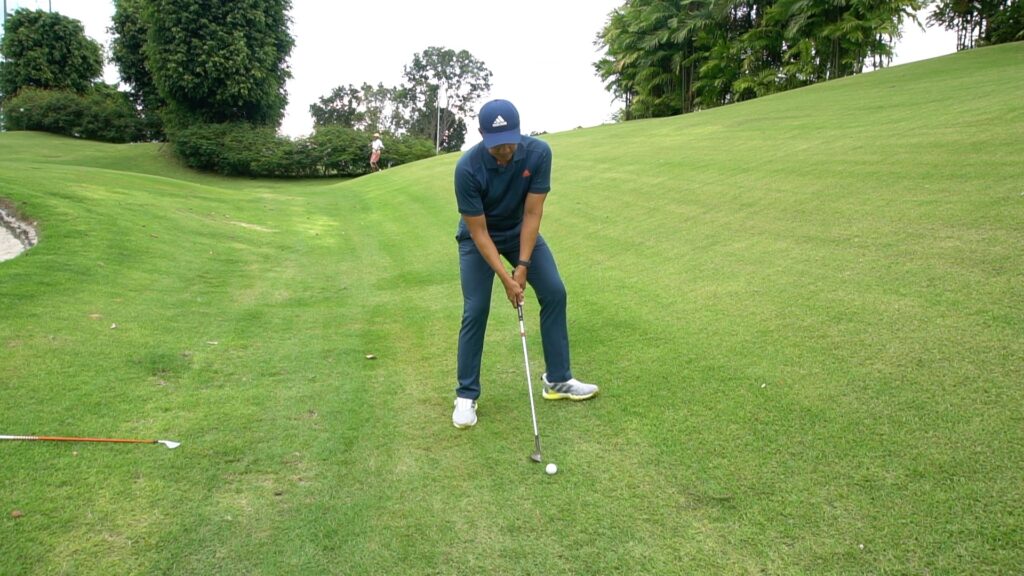
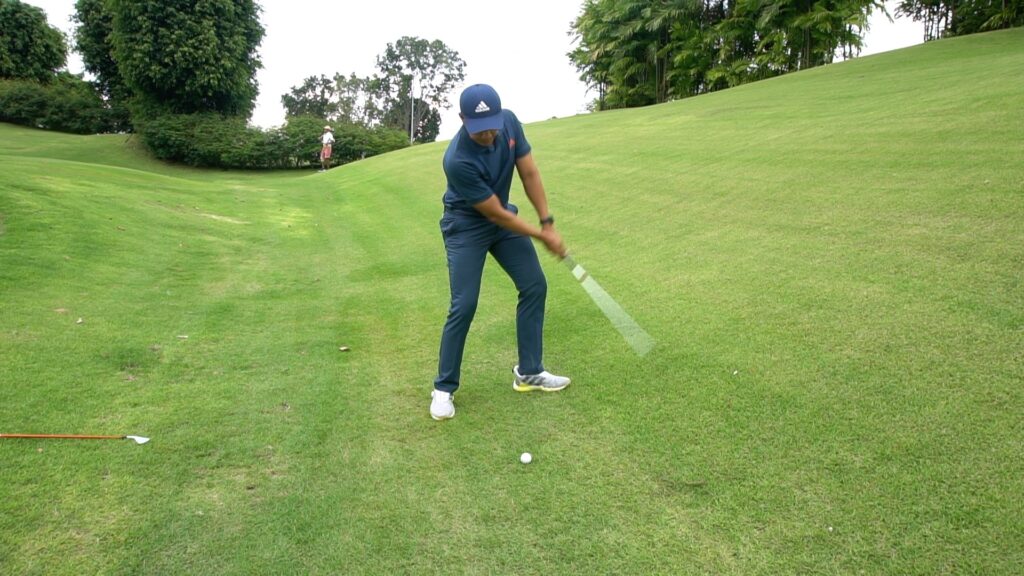
Uphill Lies
When faced with an uphill lie (Pic 2), the first thing you need to do is to test the lie. Take a normal stance behind the ball and try to brush the ground with a short swing (Pic 2a). You will notice that the club bottoms out in front of the ball. What this tells you is that you need to position the ball slightly forward of your stance towards your lead foot (Pic 3). You will also need to widen your stance (Pic 4) for stability, and maintain a shoulder line that is parallel with the slope (Pic 5).
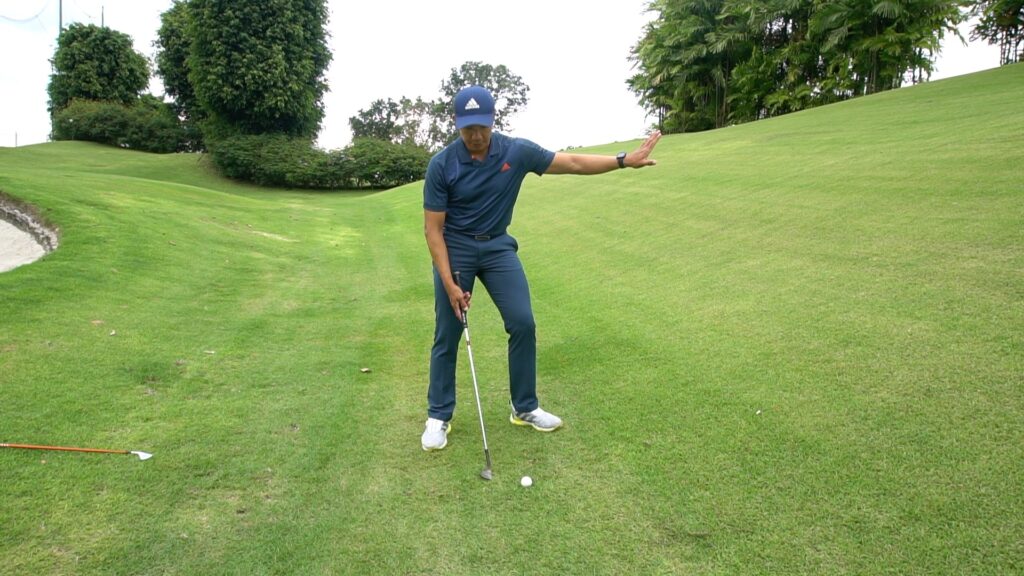
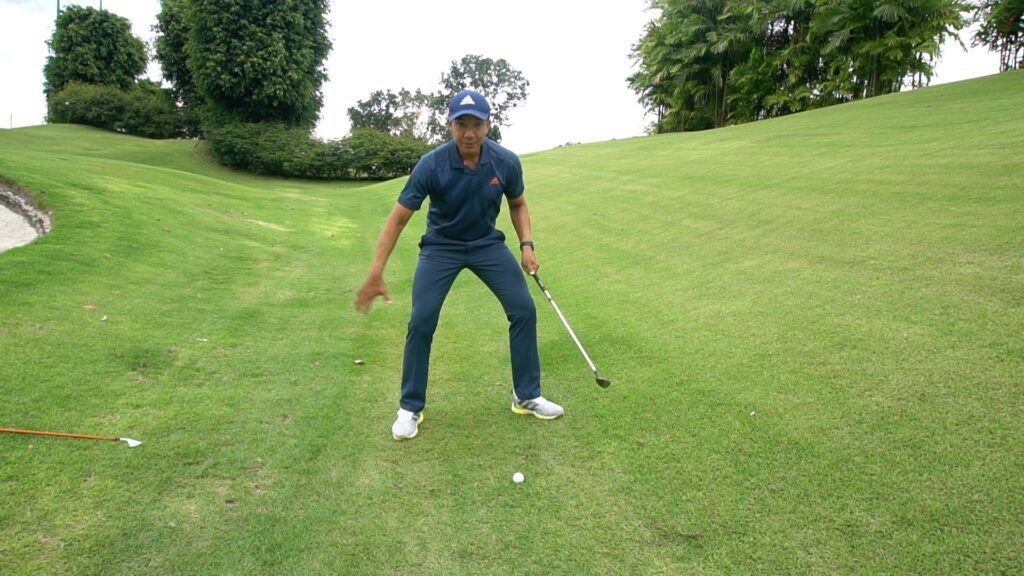
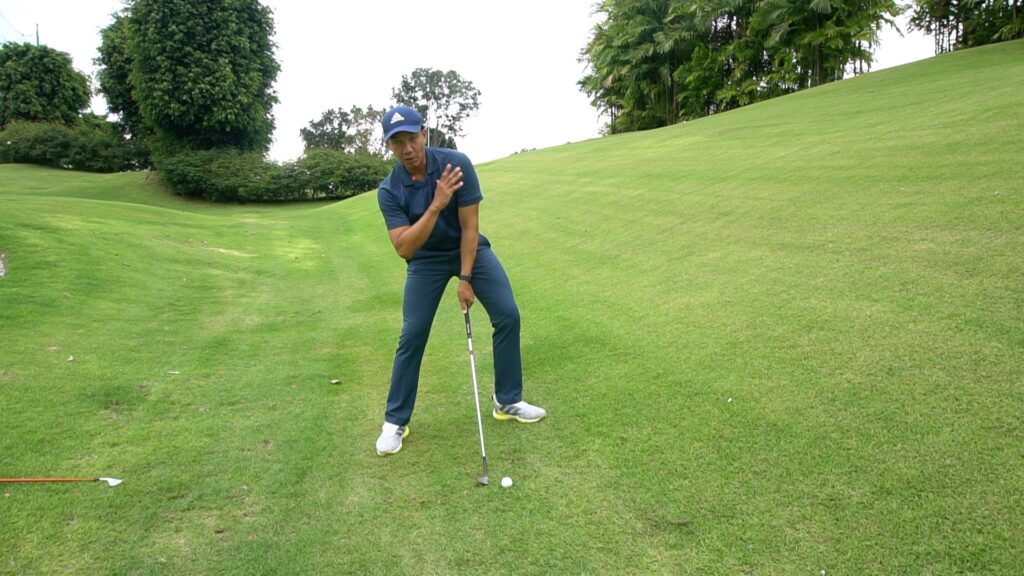

Once you are in this position, simply address the ball and swing through. Note that your balance will be compromised so don’t try to hit the ball at maximum speed. Make sure that your legs are braced and provide a solid stance, maintain your spine angle, and focus on good contact and following through.
Note that with uphill lies, there is a tendency to hit the ball on a right-to-left path (righthanders) so you need to aim accordingly.
Downhill Lies
With downhill lies (Pic 6), you just do the opposite.
First, test the lie (Pic 7) to see where your club bottoms out or contacts the ground. You will notice that this is at a point that’s towards the trailing foot (Pic 8). This means you will need to position your ball further back in the stance, somewhere below your right chest, depending on how steep the slope is (Pic 9).
Widen your stance, and make sure your shoulder line is parallel with the slope (Pic 10). Swing through at 75 per cent effort with a strong, braced stance. With downhill lies, you will face a tendency for the ball to move left to right (right-handers), so you will need to aim appropriately.
